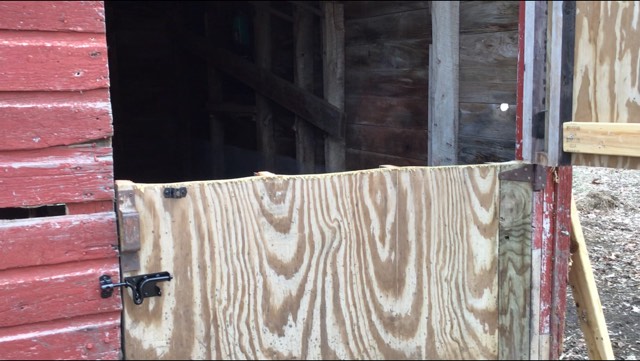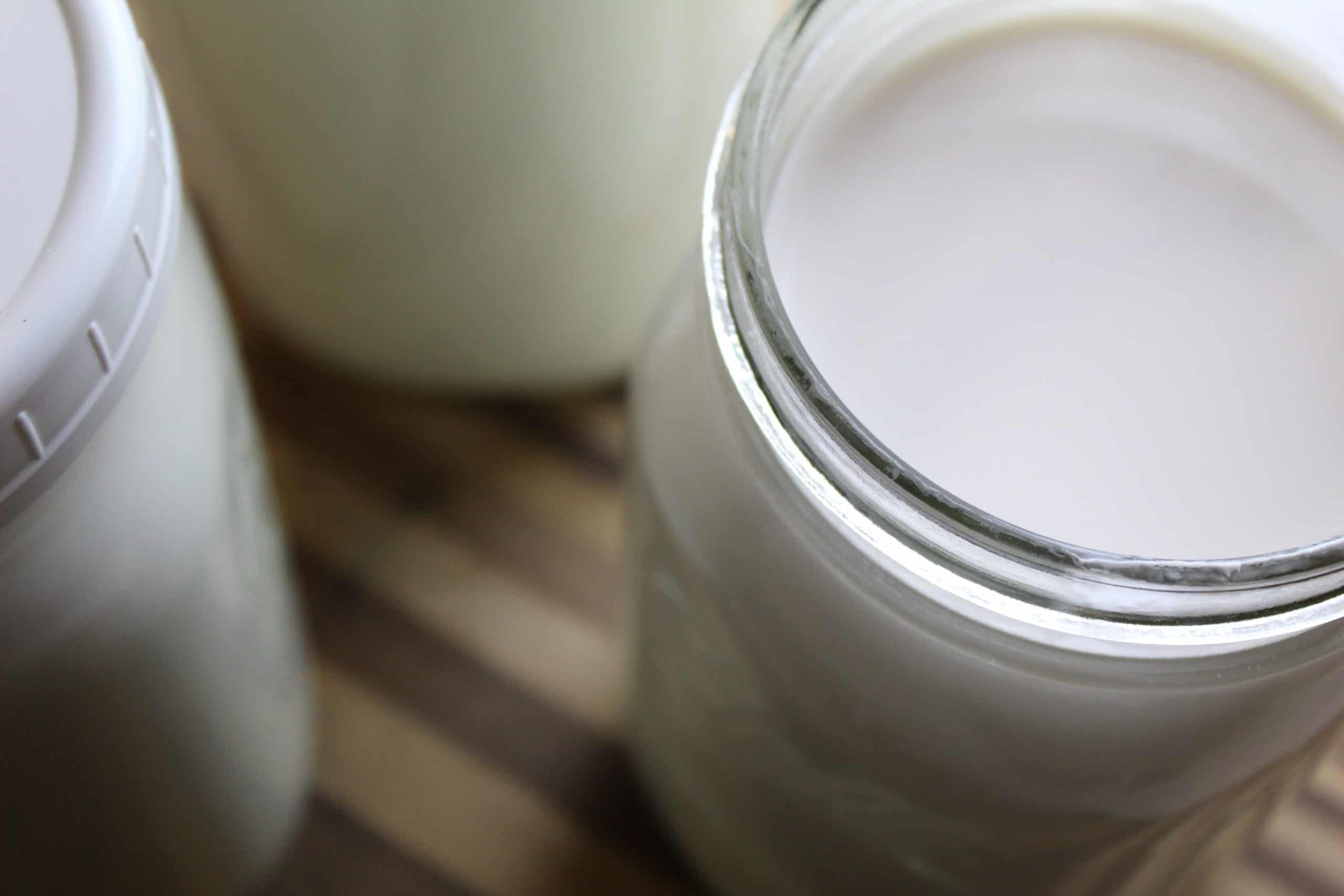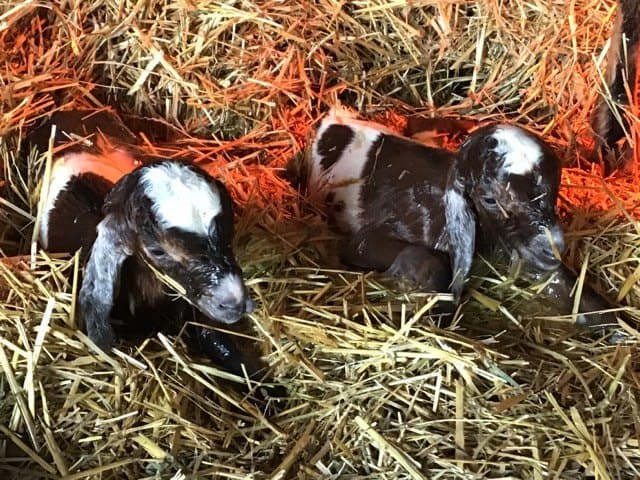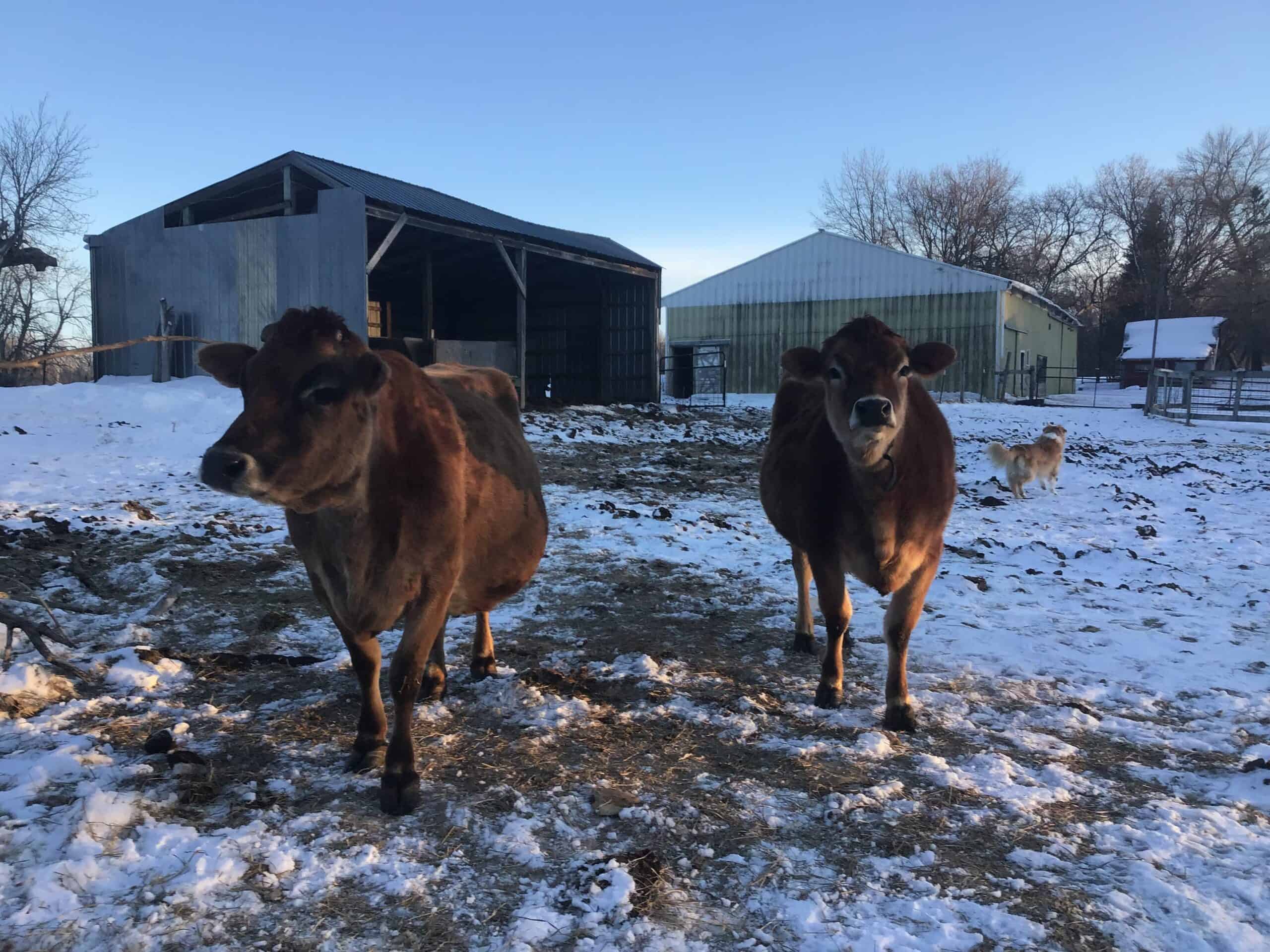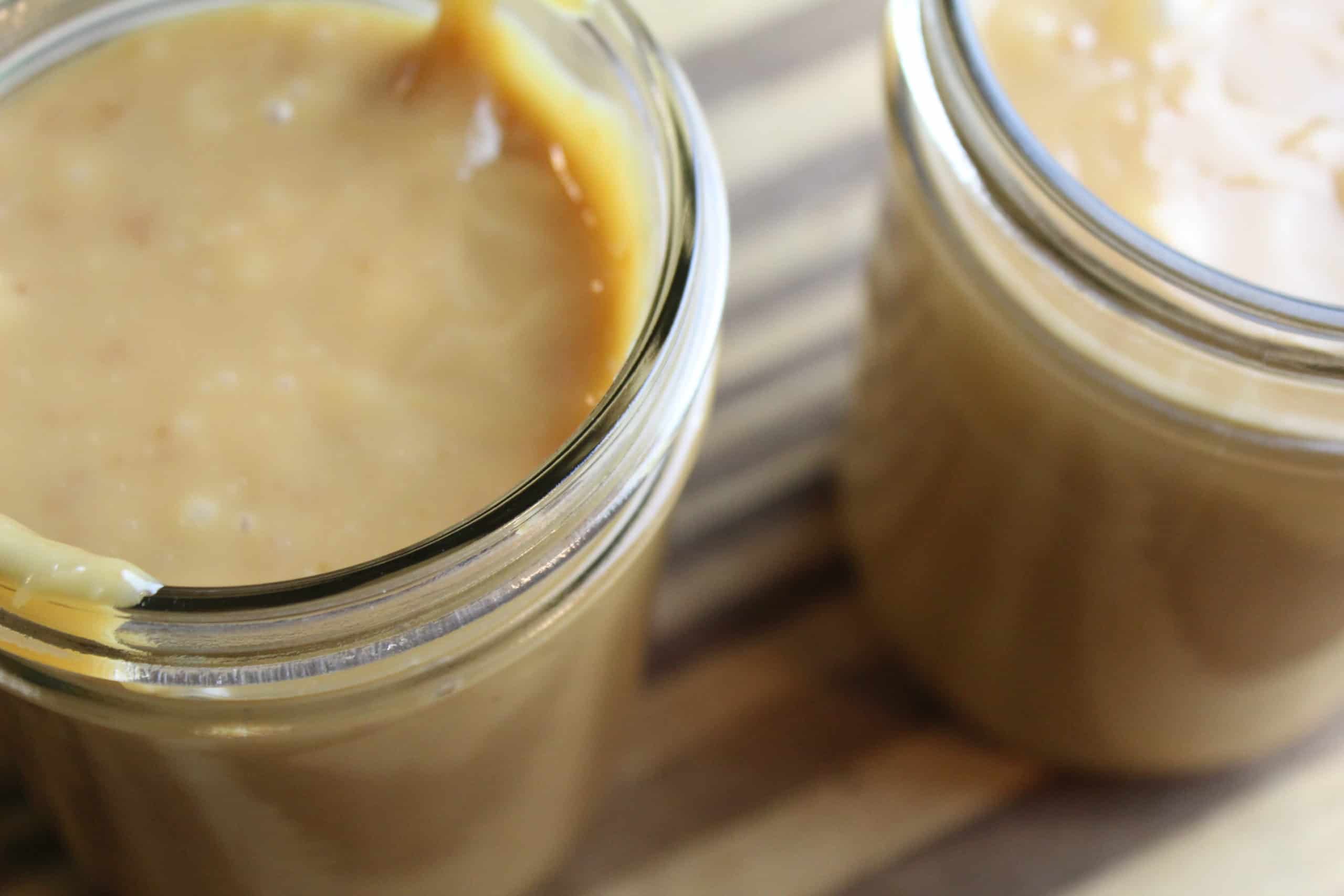Milk cow or milk goat?
Trying to decide between getting a milk cow or a milk goat? We have both at out farm. Let’s go over the pros and cons of each animal.
I’ve had Jersey milk cows for around seven years. I’ve had dairy goats for the last three. There are a lot of positives and negatives to each animal.
Do you like goat’s milk?
Before we even get into the conversation, this is an important question to ask. Have you had fresh goat’s milk? Do you like the taste?
I find that goat milk more than cow’s milk can vary in its taste depending on the time of year, how long the doe has been in milk, what she is eating, if there is a buck around, etc.
My husband doesn’t like the taste of goat’s milk and truly I’d probably pick our Jersey milk over the goat for drinking. However, we both love goat milk cheese and goat’s milk makes a very nice soap.

Pros of a Milk Cow
The family milk cow has a lot going for them that you don’t get with goats.
Easy Keepers
I’ve found that cows are fairly low maintenance. I’ve yet to have a vet call (knock on wood!) for my cows but have had several for my dairy goats. If I provide decent hay, even a grass hay most of the time, shelter, water, and room to roam, they are happy campers.
Fencing
If any of my immediately family members or neighbors are reading this they will probably laugh. Our fencing has been and is still largely a disaster area that resulted in me walking my cows how from the neighbors more times than I care to admit.
For the most part, however, if an animal has escaped it’s the goats, not the cows. A lot of folks keep their cows in with a strand or two of barbed wire or even a single, nose-height line of electric. It is much less expensive to establish fencing for cows than goats.
Cream for Butter
With a cow you will get (again depending on the type of cow, time of year, and if she is holding cream back for her calf) oodles of cream for making butter, ice cream, or just using as cream in your coffee. Given enough time, goat’s milk will separate out into cream/milk or that can be achieved with a separator. Still, it won’t be very much cream to work with.
Plenty of Milk
A milk cow will provide gallons of milk a day at times. Personally we milk share with our calf and Jerseys are known for producing less but much richer milk. On our heaviest milk days we might get two gallons a day with once a day milking. Average for us though is about a gallon a day.
If you want to make cheese, butter, etc. you’ll have more than enough for your family’s baking and cheesemaking needs and then some.

Manure
Cows will provide plenty of manure that can be composted and turned into darn good fertilizer.
Availability of Semen for Breeding
It’s an odd sentence to type but it is true. If you want to breed your cow every year (not completely necessary for milk but most do it) you will need to get either a bull to service them or you need an Artificial Insemination Tech (AI tech). If you live rurally enough there is likely an AI tech in your area whose schedule you can get on.
Another option might be a local dairy farm.
The farmer who we originally got our Jerseys from is kind enough to drive out twice a summer to AI the cows. It is usually about $20 per straw of semen (yes it comes in straws) and then I trade lamb, pork, or canned goods for his trouble.
Feed for other Livestock
Leftover whey from cheesemaking or milk that kept getting shoved to the back of the fridge makes excellent food for other animals like chickens and especially pigs. You can provide over half a pig’s diet with enough milk.
Negatives of a Milk Cow
Funny enough, almost all of the positives for a milk cow are also part of the negatives.
Space
Cows will require much more grazing space than a goat. They say that one solid acre of good pasture can feed a cow and her calf for a season. An acre is roughly the same size as a football field with the end zones cut off. That is if you have AMAZING pasture. We are talking waist high, various types of grasses and legumes, perfect pasture. Anything less and you’ll need to supplement with hay.
Transportation
Moving a cow around requires a trailer. We personally don’t own a stock trailer so we try to keep moving our cows to a minimum. I think in the three years we have lived here we have only trailered one cow.

Manure
Yes that poop is a gold mine but they make A LOT of it. We don’t have any machinery on our farm more impressive than a wheel barrow and a shovel.
Each spring we hire a skidsteer guy to come clean out our loafing shed where the animals hang out most of the winter. There’s just no way to stay on top of that amount of poop with a pitchfork.
Tons of Milk
At first it is exciting bringing in that fresh milk. If you don’t have plans for it, within about two days your fridge is going to be completely overrun. It happens to me every year to the point where I am making cheese (typically mozzarella) a couple times a week and freezing it.
I highly recommend a dorm style mini fridge or a backup fridge so you can still function with your house fridge.
Expensive to Feed
Our Jerseys will eat 30-40 pounds of hay per day, per cow. I’ve broken it down and it costs roughly $1200 a year to feed a single cow. That’s just hay, not grain or other rations you might include.
Of course if you live somewhere warmer than Minnesota and you can graze longer that number will go down.
Positives of a Milk Goat
Just like cows, dairy goats have a lot of admirable qualities and a lot of tricky areas too.
Cheaper to Start
You can get yourself a decent dairy goat for $300 if you aren’t too particular on the breeding. It’s much less of an investment than a milk cow that will run you at least $1000 most places.
Less Space
Goats can do well on far less space than a milk cow. As I mentioned with cows, you can keep one and her calf on about one SOLID acre of pasture. Along with that saying, I’ve heard you can raise five ewes and their lambs on the same amount of land. I would think that would roughly translate to goats as well.
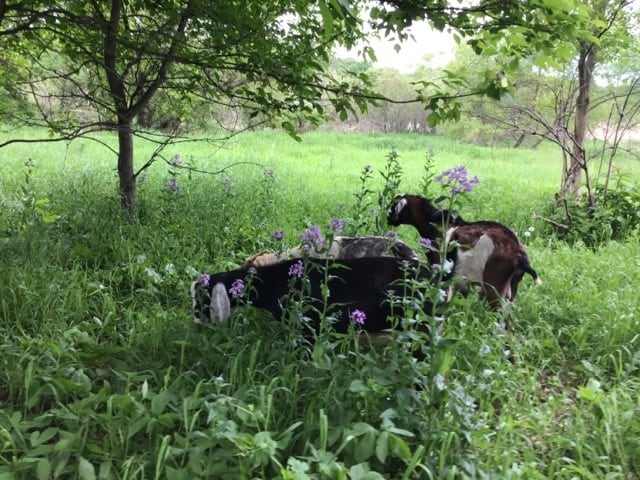
Good Option for Wooded Areas
Cows need good pasture for grazing. They eat downwards. Goats are more browsers than they are grazers. They would rather eat upwards, think brush and tree limbs. If your farm or homestead doesn’t have much pasture, goats will happily make a home in the woods.
Be advised, they can clear out a sizeable area in just one season.
Cheese and Soap
If value adding is the focus of your enterprise, goats might be the ticket. Soap is fun to make and feels luxurious on your skin. Cheese like feta and chevre are tangy and delicious in a way you just can’t duplicate with cow’s milk.
Transportation
When I got my new/used RAV4 a few years back I SWORE I’d never have livestock in it. Goats alone I think I have had four or five of them in there. Never mind geese and chickens.
If you have a hatchback of any kind they work just fine for transporting goats.
Smaller to Handle
If you aren’t accustomed to working with larger animals you might feel more comfortable with goats. They still can pack quite a punch though and are surprisingly strong for their smaller size.
Less Milk
Our Nubian doe is about two months into her lactation. Right now she is provided about 3/4 a gallon per day, being milked twice daily. Most of that I am just feeding to her kids. 3/4 a gallon per day is manageable for a family to consume, make into cheese, and use for some soap.
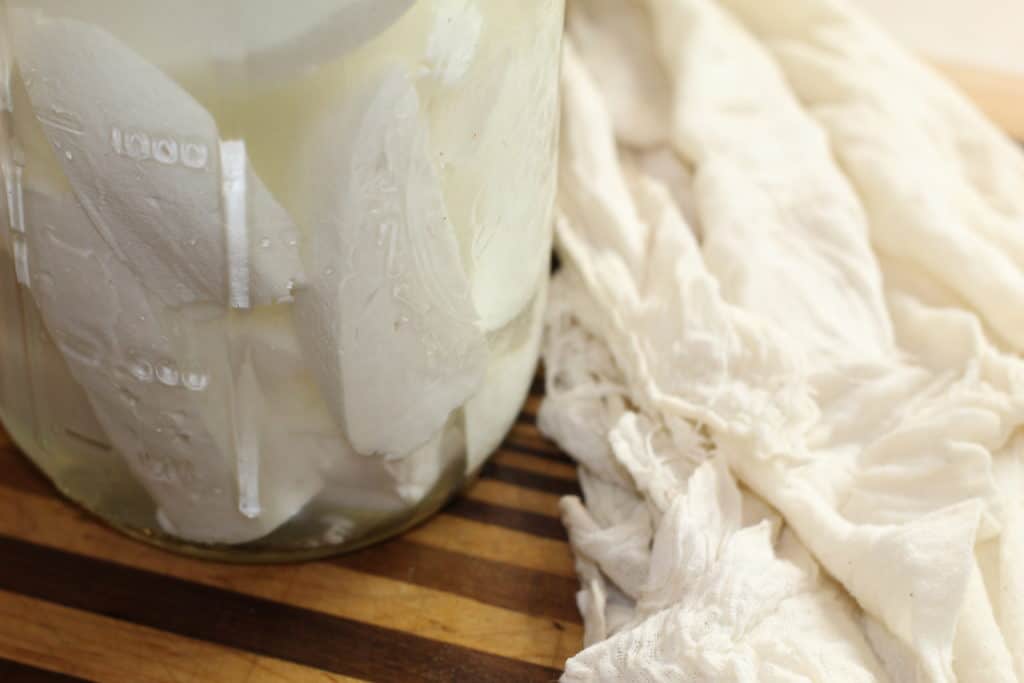
Eat Less
A goat will eat around 3-5 pounds of hay per day. One, 1,000 pound square bale will feed a single goat for 200 days. I can buy a square bale of that size for $100 where I live.
Negatives of a Milk Goat
For all their positive qualities there are a lot of reasons you might want to think twice about a milk goat.
They Die Easier
I know that sounds a little harsh but I have found it to be true. We have had goats die from pneumonia, bloat, worm resistance, and getting tangled in a hay feeder. I have the vet out at least once, typically twice a year for goat issues.
Knock on wood as hard as I can, my cows have had no issues in any of those areas.
Fencing
Goats are Houdinis of the animal world. I’ve seen them jump and twist sideways to clear a fence. Then I saw them crawl on their bellies like a snake to wriggle under a fence. I’ve watched them sprint through hot wire as fast as they could to avoid the shock.
There is no way around it, goats need good fencing. Typically woven wire. Woven wire is pricey and laborious to put up.
Now I will say, I have friends who have raised goats for decades and they use just one or two strands of hot wire to keep their goats in. You can achieve this, but it takes a lot of time and training to teach the goats to behave so well.
Less Milk with Different Flavors
Depending on the goat breed you might not get enough milk from one or even two goats to provide your family’s milk needs.
As we previously talked about, goat’s milk tends to have more of a distinct flavor you might not enjoy
Unwanted Goat Kids
On average most goats have two kids per year. Basically your goat herd will grow exponentially each year. Eventually you will max out on goats and you will need to find new homes or a freezer for them.
Are you comfortable selling them for food or eating them yourself? Is there a market in your area for goats?
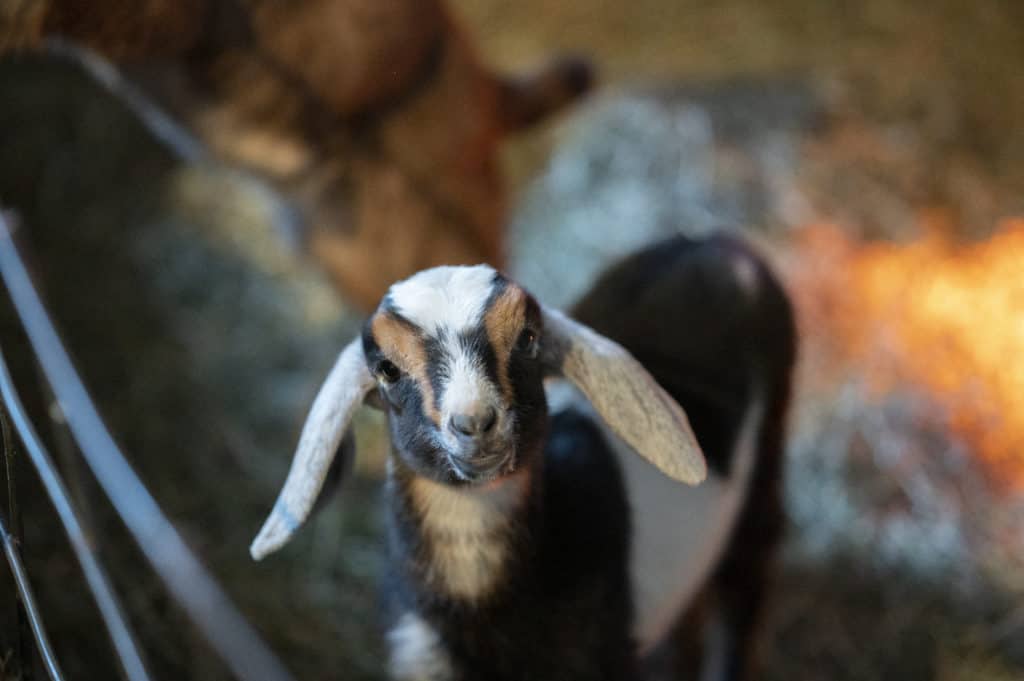
Bucks for Breeding
More likely than not you will need to keep a buck for breeding your does unless you have connections to bucks you can borrow or bring your girls to. Does are typically in heat for less than 24 hours so I find it much easier to just have a buck on farm.
Bucks tend to be a little more fragile than does. You’ll need to plan a separate pen and shelter for them well away from your does. You also need to make sure they have a buddy to keep them company or they will bust out or go mad from loneliness.
The Verdict: Milk Goats or Milk Cows?
Of course I don’t have a straightforward answer to that. Each family and farm is different.
What I can say without hesitation is that before you go and buy a herd of goats or invest in a milk cow, please get to know this animal in person. Find a neighbor, fellow farmer or homesteader who is willing to let you come hang around for a few Saturdays. After a few days with goats you might decide their sideways pupils freak you out. Or a milk cow is just more animal than you want to handle right now.
Watch and Learn
More Bovine and Caprine
If you’d like to learn more about the goats and cows at Rough and Tumble Farmhouse just click their names for more great content.
Pin it for Later




